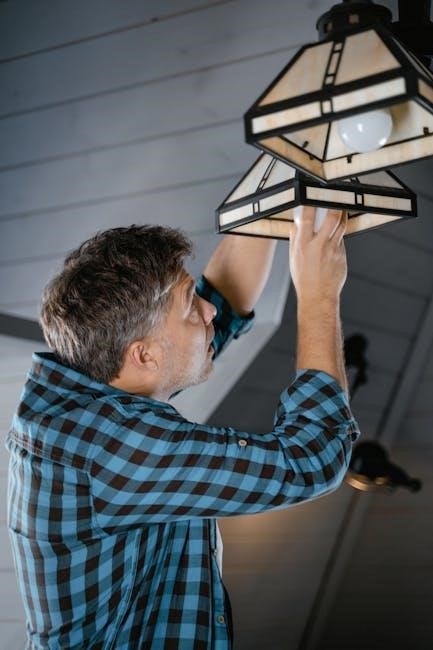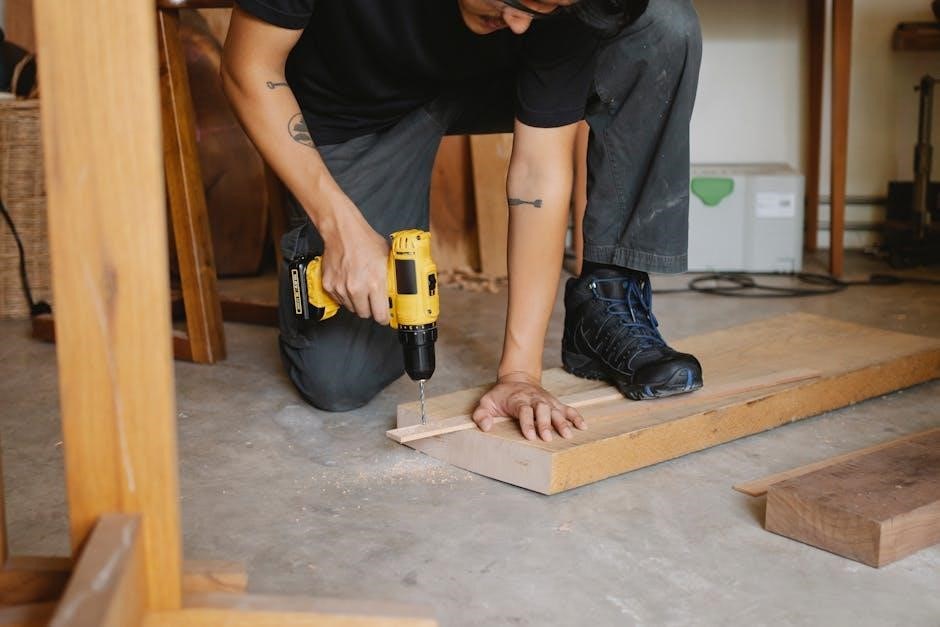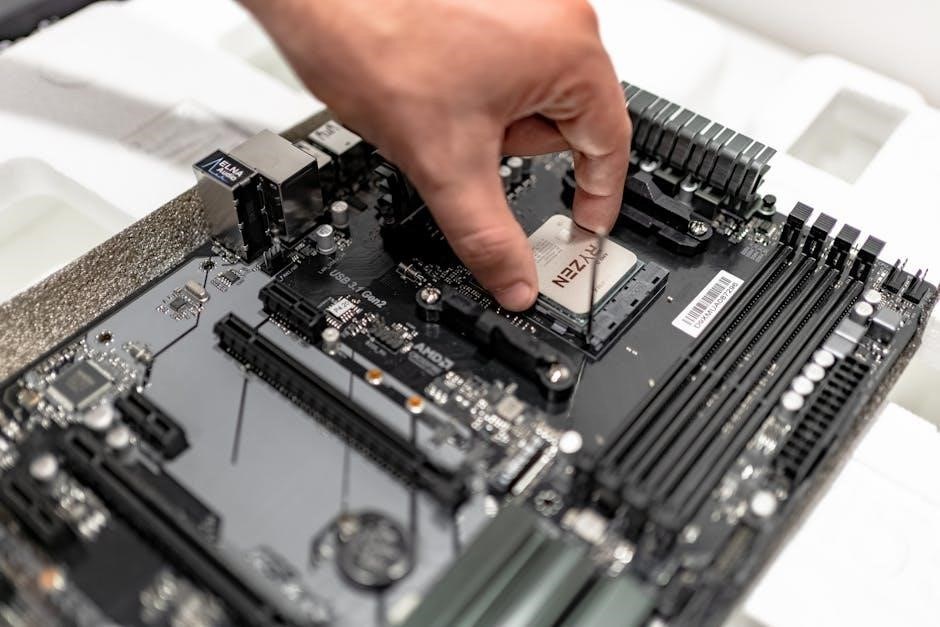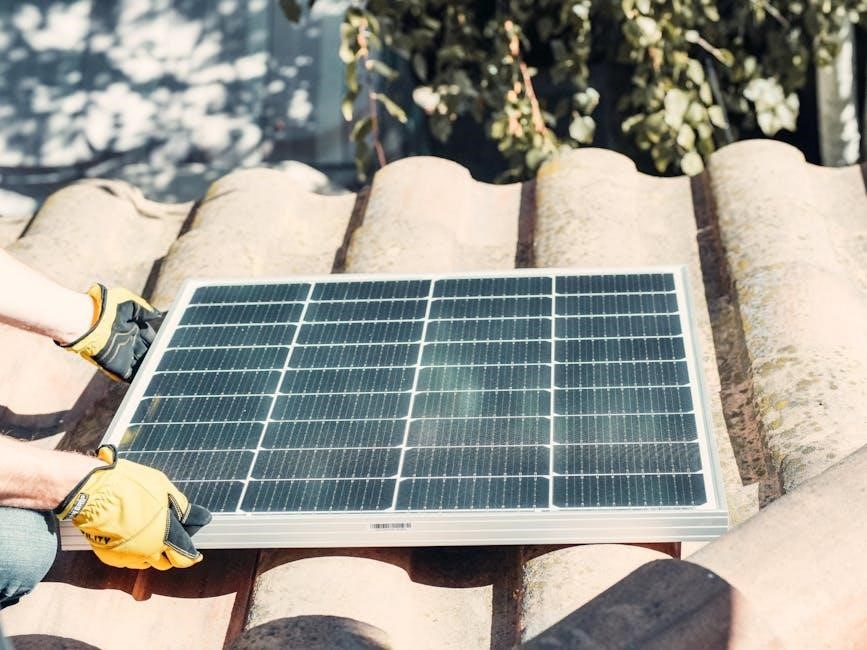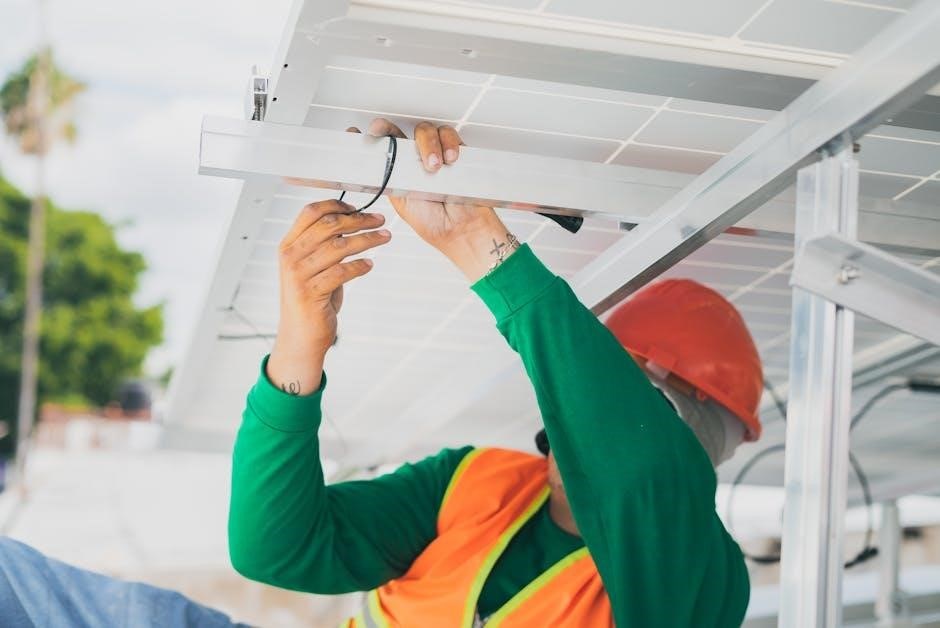Welcome to The Stanley Parable: Ultra Deluxe Trophy Guide! Discover how to unlock all 12 trophies, including the platinum, in this quirky, choice-driven experience․ Learn tips, strategies, and secrets to achieve 100% completion․ Explore the game’s humor, endings, and hidden achievements with our comprehensive guide․ Join the community and master this indie hit!
Trophy Overview
The Stanley Parable: Ultra Deluxe features 12 trophies, including a platinum, with both base game and Ultra Deluxe-specific achievements․ Some trophies have unique, long-term requirements․
Base Game Trophies
The base game trophies in The Stanley Parable: Ultra Deluxe include 10 achievements that were present in the original game․ These range from completing specific endings to unique challenges like the “Go Outside” trophy, which requires not playing the game for five years․ Other notable achievements include unlocking various narrative paths and exploring the game’s quirky humor․ Some trophies are straightforward, while others demand patience and dedication, such as avoiding the game for extended periods․ These achievements reflect the game’s unconventional design and its emphasis on player choice and persistence․ Earning these trophies offers a mix of fun and challenge, making the journey to platinum engaging and memorable․
Ultra Deluxe Trophies
The Stanley Parable: Ultra Deluxe introduces additional trophies exclusive to this expanded version․ These include new challenges such as the “Super Go Outside” trophy, requiring 10 years of inactivity, and the “Commitment” trophy, unlocked by playing continuously on a Tuesday․ The game also features secret achievements tied to specific endings and hidden paths․ These new trophies add depth and longevity to the experience, rewarding players for both dedication and creativity․ With unique requirements and humorous twists, the Ultra Deluxe trophies offer fresh objectives for veteran players while maintaining the game’s signature charm and unpredictability․ They enhance the overall trophy list, making the platinum pursuit more rewarding and distinctive․

Specific Trophies
Dive into unique achievements like the “Go Outside” and “Super Go Outside” trophies, requiring five and ten years of game inactivity respectively․ Discover the “Speedrun Trophy” for completing the narrator path swiftly and the “Commitment Trophy” for continuous play on a Tuesday․ These trophies blend humor and creativity, offering challenges that test patience, skill, and dedication․ Explore how to unlock each specific trophy with tailored strategies and insights, ensuring a fun and rewarding journey toward 100% completion in this iconic game․
Go Outside Trophy
Go Outside Trophy is one of the most unique achievements in The Stanley Parable: Ultra Deluxe․ This trophy requires players to avoid playing the game for exactly five years from their last play session․ The achievement became unlockable on October 17, 2018, five years after the original game’s release․ To earn it, players must not launch the game during this period, making it a test of patience and dedication․ Interestingly, some players exploited time settings to unlock it early, but the true challenge lies in resisting the urge to play for half a decade․ This trophy adds a layer of humor and creativity to the game’s achievement system, reflecting the game’s quirky narrative style․ It’s a memorable and rewarding milestone for dedicated fans․
Super Go Outside Trophy
Super Go Outside Trophy is the ultimate test of patience in The Stanley Parable: Ultra Deluxe․ This trophy requires players to avoid launching the game for a full 10 years from their last play session․ Building on the concept of the Go Outside Trophy, this achievement takes the challenge to an extreme․ Players must resist the urge to play the game for an entire decade, making it one of the most unique and time-consuming trophies in gaming history․ While some players have exploited system time changes to unlock it early, the true spirit of the achievement lies in waiting the full 10 years․ This trophy is a humorous and creative nod to the game’s narrative style, emphasizing dedication and perseverance․ It remains a memorable milestone for die-hard fans of the game․
Speedrun Trophy
Speedrun Trophy challenges players to complete The Stanley Parable: Ultra Deluxe in under 4 minutes and 22 seconds․ This trophy is part of the base game and requires precise navigation through the narrator’s path without deviations․ Achieving this feat demands quick reflexes and a deep understanding of the game’s structure․ The timer excludes load screens, offering a small window for optimization․ Players must adhere strictly to the narrator’s instructions, avoiding any detours or delays․ This trophy is a fun yet demanding challenge, ideal for experienced players familiar with the game’s mechanics․ It’s a unique way to test your knowledge of the narrative paths and pacing․ Unlocking this trophy is a badge of honor for those who master the art of speedrunning in this unconventional adventure game․
Commitment Trophy
Commitment Trophy is one of the most unique achievements in The Stanley Parable: Ultra Deluxe․ To unlock it, players must play the game continuously for the entire duration of a Tuesday․ This means logging in at 12:00 AM on Tuesday and playing without interruption until 11:59 PM the same day․ The trophy tests dedication and stamina, making it a standout challenge for completionists․ Interestingly, this achievement was added as a humorous nod to players’ dedication․ However, it’s important to note that this trophy is optional and not required for the Platinum․ Earning it is a testament to one’s commitment to the game, offering a sense of accomplishment like no other․ This quirky achievement adds to the game’s charm and legacy as a unique indie experience․

Missable Trophies
In The Stanley Parable: Ultra Deluxe, several trophies are considered missable due to their unique requirements․ The Test Trophy Please Ignore is a hidden achievement that can be easily overlooked, requiring specific actions during gameplay․ Similarly, the Go Outside Trophy demands five years of inactivity, making it a long-term commitment․ Players must avoid certain choices or actions to unlock these, as they are tied to particular endings or time-based conditions․ Missing these trophies can prevent 100% completion, so careful planning and attention to detail are crucial․ Ensure you follow specific steps to avoid missing out on these achievements, as some cannot be unlocked in subsequent playthroughs without meeting their strict criteria․

Role of Endings
In The Stanley Parable: Ultra Deluxe, endings play a pivotal role in unlocking trophies․ The game features numerous endings, each tied to specific choices and pathways․ Certain trophies, like the Speedrun Trophy, are directly linked to completing the Freedom Ending in under 4 minutes and 22 seconds․ Other endings, such as the Confusion Ending, unlock unique achievements․ To earn all trophies, players must explore various narrative paths and decisions, as some achievements are exclusive to specific endings․ The game’s branching storylines ensure that multiple playthroughs are necessary to experience all outcomes․ Understanding the role of endings is crucial for tracking progress toward the platinum trophy, as each conclusion offers distinct opportunities to unlock hidden achievements and milestones․

Tips and Tricks
Enable achievements in the Extras menu first․ Manipulate system time for “Go Outside” and “Super Go Outside” trophies․ Explore all endings to unlock hidden achievements․ Save frequently to avoid missing trophies․
General Tips
Start by enabling achievements in the Extras menu to track your progress․ Explore all possible endings, as many trophies are tied to specific narrative paths․ Save frequently to avoid missing rare trophies․ Manipulate system time for the “Go Outside” and “Super Go Outside” trophies by advancing the clock․ Pay attention to the narrator’s instructions, but also experiment by ignoring them to unlock unique outcomes․ Complete the game multiple times to experience different storylines and achievements․ Use online guides to pinpoint missable trophies like “Test Trophy Please Ignore․” Timing is crucial for the Speedrun Trophy; practice the narrator path to complete it under 4 minutes and 22 seconds․ Stay patient and persistent, especially for long-term achievements like the Commitment Trophy, which requires dedication․ Finally, engage with the game’s quirky humor and unpredictable nature to fully enjoy the journey!
Advanced Strategies
For advanced players, manipulating system time is a game-changer for trophies like “Go Outside” and “Super Go Outside․” Set your clock forward to simulate years of inactivity and unlock these unique achievements instantly․ To earn the Speedrun Trophy, master the narrator’s path and complete it in under 4 minutes and 22 seconds—practice makes perfect! Exploit the game’s quirky mechanics by reloading saves to retry specific choices․ For the Commitment Trophy, ensure you play the game on a Tuesday at 11:55 PM to meet its unusual requirement․ Utilize online resources to pinpoint missable trophies like “Test Trophy Please Ignore” and follow exact steps to unlock them․ Save scumming is encouraged to explore every narrative path without losing progress․ Finally, embrace the game’s surreal nature and experiment boldly—The Stanley Parable rewards creativity and persistence!
Common Mistakes
Avoid rushing through the game without exploring all endings, as some trophies require specific narrative choices․ Many players overlook the “Commitment Trophy,” forgetting to play on a Tuesday at 11:55 PM․ Others attempt to cheat time zones for the “Go Outside” trophy but fail due to system time synchronization issues․ Some miss the “Test Trophy Please Ignore” by not following exact steps․ Overlooking save scumming opportunities leads to missed achievements․ Ignoring the game’s quirky mechanics can prevent unlocking secret trophies․ Ensure you enable achievements in the Extras menu; forgetting this step can disable trophy tracking․ Lastly, skipping the Platinum Trophy guide can leave players lost, as some achievements require precise actions that aren’t intuitive․ Stay vigilant and methodical to avoid these pitfalls and secure all trophies seamlessly․

Platinum Trophy Guide
Earning the Platinum Trophy in The Stanley Parable: Ultra Deluxe requires unlocking all 12 trophies, including the elusive “Commitment” and “Super Go Outside” achievements․ Start by enabling achievements in the Extras menu to ensure proper tracking․ Focus on exploring all endings, as many trophies are tied to specific narrative paths․ The “Go Outside” trophy, requiring five years of game inactivity, can be bypassed by manipulating system time, while “Super Go Outside” demands ten years․ For the “Commitment Trophy,” play the game on a Tuesday at 11:55 PM․ Avoid missing the “Test Trophy Please Ignore” by following precise steps․ Utilize save scumming to retry challenging achievements like the “Speedrun Trophy,” which requires completing the game in under 4 minutes and 22 seconds․ Patience and careful planning are key to unlocking the Platinum Trophy in this unique, choice-driven experience․

Enabling Achievements
To earn trophies in The Stanley Parable: Ultra Deluxe, achievements must be enabled in the Extras menu․ Access this by navigating to the main menu, selecting Options, then Extras, and toggling the Achievement option to “Enabled․” This step is crucial, as achievements will not unlock unless this feature is activated before starting the game․ Note that some achievements cannot be retroactively unlocked if the game is played without this setting enabled․ If you’re already in-game, you can still enable achievements via the pause menu under Options > Extras․ Ensure this setting is correct to track your progress toward the Platinum Trophy and all other achievements seamlessly․ Proper activation guarantees all trophies will unlock as intended during your playthrough․
History of Go Outside
The “Go Outside” trophy in The Stanley Parable: Ultra Deluxe has a unique history․ Introduced in the original 2013 game, it required players not to play for five years․ This unconventional achievement became a talking point in gaming communities, symbolizing patience and dedication․ On October 17, 2018, exactly five years after the game’s release, players could finally unlock it legitimately․ A similar “Super Go Outside” trophy was added in Ultra Deluxe, extending the wait to ten years․ These trophies reflect the game’s playful narrative and its tendency to subvert traditional achievement systems․ They remain some of the most iconic and challenging trophies in gaming history, embodying the game’s quirky and humorous design․ Players who earned these trophies gained a sense of accomplishment and bragging rights within the community․

Community Resources
The Stanley Parable: Ultra Deluxe has a vibrant community offering extensive resources for trophy hunters․ Online forums like Reddit and Steam discussions are filled with player guides and tips․ YouTube channels provide video walkthroughs for tricky achievements like the “Speedrun Trophy” and “Commitment Trophy․” IGN and MetaGames host comprehensive trophy lists and step-by-step instructions․ Additionally, community members share creative strategies to unlock rare trophies, such as altering system dates to bypass time-based requirements․ These collective efforts ensure no player feels isolated in their quest for 100% completion․ The community’s collaborative spirit makes achieving the platinum trophy an enjoyable and accessible journey for all players․
Completing The Stanley Parable: Ultra Deluxe’s trophy list is a rewarding experience that combines humor, creativity, and patience․ With 12 trophies, including the platinum, players are challenged to explore every narrative path and meet unique requirements․ The community offers invaluable resources, from video guides to forum discussions, helping you overcome even the toughest achievements․ Patience is key, especially for time-based trophies like “Super Go Outside․” By following this guide and embracing the game’s quirky nature, you’ll unlock every trophy and experience all the game has to offer․ Happy gaming!

Time Management Strategies
Efficiently managing your time is crucial when aiming for The Stanley Parable: Ultra Deluxe platinum trophy․ For trophies like “Speedrun,” focus on completing specific paths quickly, ideally under 4 minutes and 22 seconds․ Use skip dialogue options to save time and memorize key choices․ For long-term achievements such as “Go Outside” and “Super Go Outside,” plan ahead by setting reminders or modifying system dates to simulate the passage of time․ Time management also applies to multiple playthroughs, ensuring you experience different endings and unlock all trophies systematically․ Prioritize shorter achievements first to maintain momentum and avoid burnout․ With careful planning, you can efficiently unlock all trophies and enjoy the game’s unique narrative․

Secret Trophies
The Stanley Parable: Ultra Deluxe features several secret trophies that reward unconventional playstyles and dedication․ The “Go Outside” trophy unlocks after five years of not playing the game, while “Super Go Outside” requires a decade of abstinence․ These unique achievements challenge players to resist the game’s charm․ Additionally, the “Commitment” trophy demands continuous play on a Tuesday, testing your endurance․ Other hidden trophies, like those tied to specific endings, require multiple playthroughs and precise choices․ These secret achievements add a layer of mystery and longevity, encouraging players to explore the game’s depth and humor․ Discovering and earning these elusive trophies is a true test of patience and dedication․














